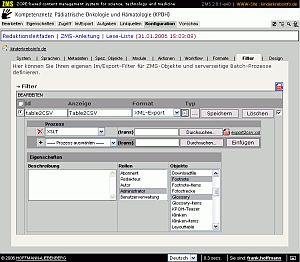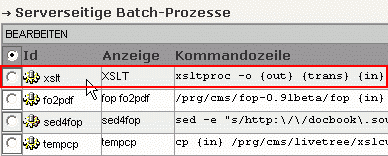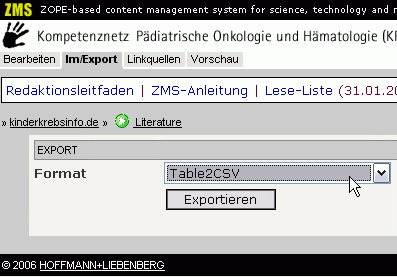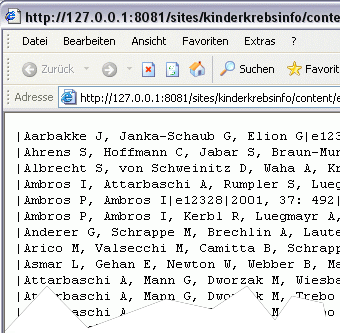[1] Presentation of the filter definition: the process only consists of one single XSL-transformation step; the result format is declared as "text".
Output of ZMS data tables as CSV
The abbreviation CSV (Character Separated
Values, also Comma Separated Values) stands for a file format. A simply structured XML-code underlies the ZMS data table that can be transformed with DTML or XSLT to CSV. In this way ZMS data table contents can be transferred very easily to other database systems. The example shows the variant with XSLT.




